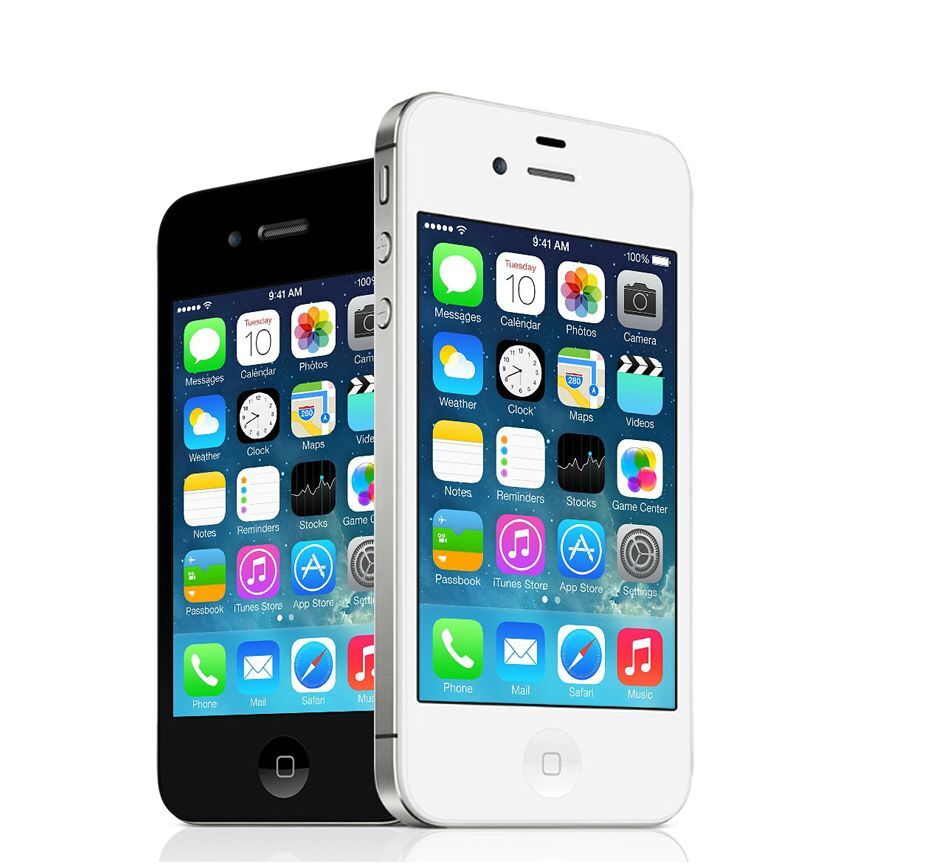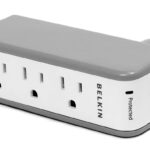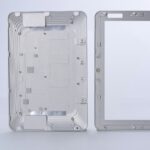The Apple iPhone 4S, launched in 2011, marked a significant upgrade from its predecessor. This smartphone introduced several new features and improvements that captivated users worldwide. The iPhone 4S boasted an 8 MP primary camera, a powerful Apple A5 chipset, and up to 64 GB of storage, making it a formidable device for its time.
You might wonder what set the 4S apart from other smartphones of its era. One of its standout features was Siri, Apple’s voice assistant that allowed you to interact with your phone using voice commands. This innovative technology paved the way for future advancements in AI-powered smartphone assistants.
The iPhone 4S also featured a 3.5-inch Retina display protected by Corning Gorilla Glass, ensuring durability and crystal-clear visuals. Its design remained similar to the iPhone 4, maintaining the sleek and premium feel Apple products are known for. Here’s a quick overview of some key specifications:
| Feature | Specification |
|---|---|
| Display | 3.5″ Retina |
| Chipset | Apple A5 |
| Storage | Up to 64 GB |
| Camera | 8 MP primary |
| Battery | 1432 mAh |
The iPhone 4S was a popular and significant phone in its time. Here’s a summary of its key specifications:
Display:
- 3.5-inch Retina display
- 960 x 640 pixel resolution at 326 ppi
Processor:
- Apple A5 dual-core chip
Memory:
- 512 MB of RAM
Storage:
- Options for 8GB, 16GB, 32GB, or 64GB
Camera:
- 8-megapixel rear camera with autofocus and LED flash
- 1080p HD video recording at 30 frames per second
- VGA front-facing camera
Connectivity:
- Wi-Fi (802.11b/g/n)
- Bluetooth 4.0
- 3G (GSM and CDMA models available)
Battery:
- Built-in rechargeable lithium-ion battery
- Talk time: Up to 8 hours on 3G, up to 14 hours on 2G (GSM)
- Standby time: Up to 200 hours
Other Features:
- Siri voice assistant
- iOS 5 (originally), upgradable to iOS 9.3.6
- Micro-SIM card slot
Dimensions and Weight:
- Height: 4.5 inches (115.2 mm)
- Width: 2.31 inches (58.6 mm)
- Depth: 0.37 inch (9.3 mm)
- Weight: 4.9 ounces (140 grams)
Key improvements over the iPhone 4:
- Faster A5 processor
- Improved 8-megapixel camera
- Siri voice assistant
The iPhone 4S was a well-regarded phone that introduced several key features, including Siri, that are still relevant in smartphones today.
Design and Build
The iPhone 4S retained the iconic design of its predecessor while introducing subtle refinements. Its sleek form factor and premium materials set new standards for smartphone aesthetics and build quality.
Dimensions and Weight
The iPhone 4S measured 115.2 mm in height, 58.6 mm in width, and 9.3 mm in depth. These compact dimensions made it comfortable to hold and easy to slip into a pocket or purse. The device weighed 140 grams, striking a balance between solid feel and portability.
A comparison of iPhone 4S dimensions to its competitors:
| Model | Height (mm) | Width (mm) | Depth (mm) | Weight (g) |
|---|---|---|---|---|
| iPhone 4S | 115.2 | 58.6 | 9.3 | 140 |
| Galaxy S II | 125.3 | 66.1 | 8.5 | 116 |
| HTC Sensation | 126.1 | 65.4 | 11.3 | 148 |
Materials and Colors
Apple crafted the iPhone 4S using premium materials. The device featured a stainless steel band around its perimeter, serving as both structural support and antenna. This band was sandwiched between two aluminosilicate glass panels, known for their durability and scratch resistance.
The glass surfaces featured an oleophobic coating to repel fingerprints and smudges. This coating helped maintain the phone’s sleek appearance during daily use.
You could choose between two color options for the iPhone 4S:
- Black
- White
Both variants sported the same stainless steel band, with the color difference appearing in the front and back glass panels. The black model offered a more understated look, while the white version provided a brighter, more distinctive appearance.
Hardware Specifications
The iPhone 4S boasts impressive hardware for its time. It features a powerful processor, ample storage options, a high-resolution display, and an advanced camera system.
Processor and Memory
The iPhone 4S is powered by the Apple A5 chip, a significant upgrade from its predecessor. This dual-core processor delivers enhanced performance and smoother multitasking capabilities.
Key features of the A5 chip:
- Dual-core CPU
- PowerVR SGX543MP2 GPU
- 512 MB RAM
The A5’s dual-core architecture allows for faster app launches and improved responsiveness. Its GPU provides a substantial boost to graphics performance, enabling more complex games and smoother animations.
The 512 MB of RAM helps with multitasking and app switching. While modest by today’s standards, it was sufficient for most tasks on iOS 5 and subsequent versions.
Storage Options
You can choose from several storage capacities to suit your needs:
| Storage Capacity | Use Case |
|---|---|
| 8 GB | Basic usage, few apps and media |
| 16 GB | Average user, moderate app and media storage |
| 32 GB | Power users, extensive app and media libraries |
| 64 GB | Heavy users, large media collections |
The 8 GB model is ideal for light users who primarily use basic functions and few apps. The 16 GB and 32 GB options cater to average and power users respectively. The 64 GB variant offers ample space for storing large media libraries, numerous apps, and high-quality photos and videos.
Display Technology
The iPhone 4S features a 3.5-inch Retina display with IPS LCD technology. This screen offers sharp visuals and vibrant colors.
Key display specifications:
- Resolution: 640 x 960 pixels
- Pixel density: 330 ppi
- Contrast ratio: 800:1 (typical)
- Maximum brightness: 500 cd/m² (typical)
The Retina display technology provides crisp text and detailed images. Its high pixel density makes individual pixels indistinguishable at normal viewing distances.
The IPS (In-Plane Switching) technology ensures wide viewing angles and accurate color reproduction. This makes the display suitable for sharing content or viewing photos and videos.
Camera and Imaging
The iPhone 4S introduces a significantly improved camera system. Its 8-megapixel rear camera captures high-quality photos and videos.
Key camera features:
- 8-megapixel sensor
- f/2.4 aperture
- 1080p video recording at 30 fps
- LED flash
- Autofocus
- Face detection
The larger sensor and improved optics result in sharper images with better low-light performance. The f/2.4 aperture allows more light, enhancing photo quality in various lighting conditions.
Video capabilities are impressive, with 1080p Full HD recording. This offers a significant upgrade from the previous 720p standard.
The front-facing VGA camera enables FaceTime video calls and selfie-taking. While basic by today’s standards, it was sufficient for its intended purposes at the time.
Software and Features
The iPhone 4S introduced significant software improvements and new features. It launched with iOS 5 and brought the revolutionary Siri voice assistant to Apple’s mobile devices.
Operating System
The iPhone 4S launched with iOS 5, a major update to Apple’s mobile operating system. iOS 5 added over 200 new features including:
• iCloud integration for syncing data across devices
• Notification Center for managing alerts
• iMessage for free messaging between iOS users
• Over-the-air software updates
The device supported updates up to iOS 9.3.6, released in 2019. This provided years of new features and security fixes.
iOS on the iPhone 4S offered a user-friendly interface with app icons on the home screen. Multitasking let you quickly switch between open apps. The App Store gave access to millions of third-party applications.
Voice Assistant and Services
Siri was the iPhone 4S’s standout feature. This voice-controlled assistant could:
• Make calls and send texts
• Set reminders and alarms
• Check weather and stocks
• Find nearby businesses
• Answer questions
Siri used natural language processing to understand voice commands. It tapped into multiple services to provide helpful responses.
The 4S also integrated tightly with iTunes for media syncing and purchases. You could buy music, movies, and apps directly on the device. iTunes Match let you access your entire music library in the cloud.
| Feature | Description |
|---|---|
| Siri | Voice assistant for tasks and queries |
| iCloud | Cloud storage and syncing service |
| App Store | Marketplace for downloading applications |
| iTunes | Media player and online store |
Connectivity and Sensors
The iPhone 4S boasts advanced connectivity options and a comprehensive sensor suite. These features enhance the device’s functionality and user experience.
Network and Communication
The iPhone 4S supports various network technologies for global connectivity. It operates on GSM, CDMA, and UMTS networks. The device is compatible with 3G HSDPA and HSUPA protocols.
4G connectivity is not available on this model. For voice calls, it uses CDMA2000 1xEV-DO rev. A. The iPhone 4S is a world phone, allowing seamless roaming across different network types.
Wi-Fi capabilities include 802.11b/g/n standards. Bluetooth 4.0 enables wireless accessory connections. A Micro-SIM card slot is present for carrier services.
| Connectivity | Supported Technologies |
|---|---|
| Cellular | GSM, CDMA, UMTS, HSDPA, HSUPA |
| Wi-Fi | 802.11b/g/n |
| Bluetooth | 4.0 |
| SIM | Micro-SIM |
Sensor Suite
The iPhone 4S comes equipped with several sensors to enhance its functionality. These sensors enable various features and improve user interaction with the device.
An accelerometer detects motion and orientation changes. This allows the screen to rotate based on how you hold the phone. The gyroscope works with the accelerometer for more precise motion sensing in games and apps.
The ambient light sensor adjusts screen brightness to match your surroundings. This helps conserve battery life and improves display readability. A proximity sensor turns off the screen when you hold the phone to your ear during calls.
GPS and A-GPS provide location services for navigation and location-based apps. The digital compass helps with orientation and mapping functions.
Frequently Asked Questions
The iPhone 4S introduced several key features and specifications that set it apart from its predecessors. Users often have questions about its hardware, pricing, release date, storage options, connectivity, and software support.
What are the hardware specifications of the iPhone 4S?
The iPhone 4S features a 3.5-inch Retina display with a resolution of 960 by 640 pixels. It has an 8-megapixel rear camera capable of recording 1080p video.
The device is powered by Apple’s A5 chip, a dual-core processor clocked at 1.0 GHz. It also includes 512 MB of RAM for improved multitasking performance.
How much did the iPhone 4S cost at launch?
At launch, the iPhone 4S was priced based on storage capacity. The 16GB model started at $199, the 32GB at $299, and the 64GB at $399 with a two-year contract.
Prices for unlocked versions were higher, typically ranging from $649 to $849 depending on storage capacity.
When was the iPhone 4S officially released?
Apple unveiled the iPhone 4S on October 4, 2011. It became available for pre-order on October 7, 2011, and was officially released to the public on October 14, 2011.
The device launched initially in seven countries, including the United States, Canada, and the United Kingdom.
What is the storage capacity range for the iPhone 4S?
The iPhone 4S was available in four storage capacities: 8GB, 16GB, 32GB, and 64GB. The 8GB model was introduced later as a more affordable option.
You could choose the capacity based on your needs for apps, photos, videos, and other data.
What type of charging connector does the iPhone 4S use?
The iPhone 4S uses Apple’s 30-pin dock connector for charging and data transfer. This was the standard connector for Apple devices before the introduction of the Lightning connector.
You can use the same charger and accessories compatible with earlier iPhone models and many iPod devices.
Does the iPhone 4S support the latest iOS updates?
The iPhone 4S does not support the latest iOS updates. The last compatible version for this device is iOS 9.3.5, released in August 2016.
You can still use the iPhone 4S, but it won’t receive new features or security updates available in more recent iOS versions.







